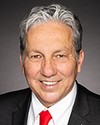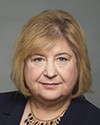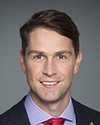Thank you.
The questioning now moves to MP Cathy McLeod.
Evidence of meeting #113 for Indigenous and Northern Affairs in the 42nd Parliament, 1st session. (The original version is on Parliament’s site, as are the minutes.) The winning word was elders.
A recording is available from Parliament.
Liberal
Conservative

Cathy McLeod Conservative Kamloops—Thompson—Cariboo, BC
Thank you, Madam Chair.
Thank you to all the witnesses.
I want to make a few notes right up front. This is a really important study which, as far as I'm aware, the indigenous affairs committee has never undertaken before. As I look at the motion, it asked for a comprehensive study on long-term care on reserve—elder care, chronic illness, palliative and hospice, and culturally relevant practices. It's a massive study, and the committee is committed to look at this for only another meeting. It means three meetings in total.
I think this is really important, and we need to do a good job on this. I'd like to put forward a motion that we continue the study and extend it into the fall, and that a travel request be submitted in partnership with this initiative.
For us to do the work we need to do, we need to see places like the hospital you were talking about.
I would put that motion on the floor.
Liberal

Dan Vandal Liberal Saint Boniface—Saint Vital, MB
Could I suggest that the motion be tabled until we do committee business? Then we could spend our time asking our witnesses the questions that we have.
Conservative

Cathy McLeod Conservative Kamloops—Thompson—Cariboo, BC
I think it's a quick, easy one that hopefully will be supported.
Liberal

Mike Bossio Liberal Hastings—Lennox and Addington, ON
I totally respect the member's motion. Generally I'm in agreement with it, but I think it would be best for us to have a discussion.
Maybe we could get back to you in the next meeting.
Conservative
Conservative

Cathy McLeod Conservative Kamloops—Thompson—Cariboo, BC
—that I believe it's important, especially with health care moving from Health Canada to the new department and ultimately into first nations communities.
Chief Bellegarde, it sounded like you got through that maze of complications with the federal government and the provincial government, and representing the communities you represent, to create a hospital between you. Perhaps you could tell me a little bit more about that process and what the federal government needs to do. There's expertise in the provinces in this area, for sure. To be quite frank, I think the federal government doesn't have as much expertise in terms of health care or health care delivery. Apart from, as you say, trying to ensure that first nations assume responsibility for it, talk about your process and what we need to do.
Tribal Chief, File Hills Qu’Appelle Tribal Council
It's a long story, so I'm going to try to keep it succinct.
On the issue of studies, the data is there. The data has been there for decades upon decades about health indicators and the challenges of the system, the access, the complexity, the jurisdictional divide. The data is already there. I would submit that action is required. You do have innovation sites around this country that can take action and can operate on a pilot project basis.
One issue, of course, is under-resourcing. This means budgets and some of those constraints, and cost-control restrictions. We understand those. We manage our processes very well from a fiscal management perspective. Our executive director and our executive team at the hospital have enabled us to set aside surpluses year over year so that we can invest in a capital project for dialysis services. We offer renal care.
Neither the federal government, nor the provincial ministry of health, nor the regional health structure wanted to support this. We couldn't get everybody together, so what we did was to make a long-term plan. The challenges to accessing services for renal care...the impacts of dialysis, renal care, and diabetes on our people are paramount, so we put a long-term plan and a strategy in place, and we backed it up with our own money.
We made a plan to build an expansion of our hospital in Fort Qu'appelle. We started that process. Health Canada and the first nations Inuit health branch came online very quickly because they know the work we're leading at the hospital. They know the model of care we're developing. They know that the data that's now being produced is starting to trend, not only for first nations people but for the public we serve. It's a matter of closing some of those gaps and trending in a positive way.
They knew that, but this separation, the division of powers between federal and provincial in health care, always limited what Health Canada and first nations and Inuit health branch could support. They couldn't support the actual delivery of a service—dialysis services in that renal care paradigm—because it would take them offside. They didn't want to set a precedent that may spill over into Manitoba or Ontario, and so forth, and provide health care service delivery funding to a hospital. Even though we're on reserve and are not under the auspices of the provincial health system, they didn't want to step into a precedence area.
The province told us, “Listen. We do this on data and on numbers, and our numbers are in the north, in the Prince Albert and Meadow Lake areas. There are higher needs in that area, so you're number two or number three on the list.” We were always fighting to get ourselves as a priority because it was our people whose quality of life was impacted, our people who were giving up even trying to access service and primary health care because of these challenges. We put our money behind a long-term plan. We had the credibility. We could recruit our own physicians outside of the provincial health care physician recruitment strategy because that wasn't serving rural Saskatchewan either.
We took action. We put resources and our own money behind it. We didn't wait for approval from either the federal or provincial governing authorities. We're now weeks from offering full dialysis services with Saskatchewan Health Authority's support.
Conservative

Cathy McLeod Conservative Kamloops—Thompson—Cariboo, BC
In British Columbia, for example, we have a hospital act under which hospitals have to be designated. You are designated under the hospital act but not under the health authority. How much does the province pay of your operating costs?
Tribal Chief, File Hills Qu’Appelle Tribal Council
It's $6.9 million. We have health care initiatives with the first nations and Inuit health branch of Health Canada for some of the pilot projects, some of our women's health centres, and some of the innovations that we're leading. There's also the provincial system for acute care services and the funding for acute care. We have lab services. We have all the staffing costs of the nursing staff and capital costs. They're stacked agreements. There are always challenges between provincial and federal, so we balance as best we can. Where there's no leadership on either side, we'll take the lead and run with it.
Liberal

The Chair Liberal MaryAnn Mihychuk
Questioning now goes to MP Rachel Blaney.
I remind members that we have three groups presenting, so please direct your questions accordingly. We have two members on video call.
Go ahead, Rachel.
NDP

Rachel Blaney NDP North Island—Powell River, BC
Thank you, Madam Chair.
Thank you so much for being here.
I'm going to start with you, Chief Bellegarde, if that's all right.
I want to thank you, first of all, for bringing up my colleague's bill, Bill C-262, on UNDRIP. I think it's a fundamental principle that we need to be looking at.
One of the things I find very interesting about what you're telling us today is exactly what we should be moving forward in, which is changing the process in Canada because of the wisdom of the indigenous people who were here in the first place. It's that sort of changing process, and understanding that free, prior, and informed consent is a lot broader than just on energy processes.
One of the things you talked about really clearly here is that we have a framework where the policies are just piled on top of each other and they're not functioning at all. Yet you have applied a lot of wisdom and knowledge in figuring out how to bring these multi-jurisdictional areas together through your hospitals. Could you tell us a bit about what you could share with the federal government around that expertise?
Tribal Chief, File Hills Qu’Appelle Tribal Council
There's the other level of policy framework in that legislative aspect, and that's what we're working hard on, on the indigenous side, through our first nations and our governance structures. We're bringing that forward.
It is true, there's the UN Declaration on the Rights of Indigenous Peoples; it is true there are the calls to action, but it really is self-governing, which the Sioux Valley Dakota Nation is on. We have the Whitecap Dakota nation, just south of Saskatoon, in their own self-governing negotiating process.
It's about empowering and enabling. It's about building institutional capacity, and we're investing not only money but also our people resources. We're accessing that traditional knowledge. We're interpreting our traditional knowledge from the languages, from our elders, and from our traditional healers; and we're making it so that it matches public standards, whether federal or provincial.
When we do that, we develop new models, policy frameworks that actually are more effective. Then when we infuse traditional knowledge and indigenous knowledge on traditional medicines in a more holistic model of care and health, it strengthens that public health care model and public health care framework. We add value to the policy, instead of federal-provincial and that's it: “You guys have to operate like this and under the auspices.....” We've not accepted that. We want to provide better policy. We want to strengthen public policy. We want to bring solutions forward. We're doing that. We're practising that. We're leading that. We're researching that. We have the data. We're innovating.
Put some action to some innovation sites, and let's start to bring new policy frameworks forward that work in federal and provincial....
NDP

Rachel Blaney NDP North Island—Powell River, BC
You also mentioned something around Jordan's principle and the application, and you're not the first person to bring this up. We've really seen a focus on young people, which is so important. What we heard here is that it has to be broader than that, because that multi-jurisdictional issue is coming up not just for children but across the board. Of course, care has to be the priority. Could you talk a bit about the impact?
Tribal Chief, File Hills Qu’Appelle Tribal Council
The impact of intergenerational trauma starts at an early age for too many of our young people. They carry that, and it impacts their health. It impacts the length of their lives. They're living a much higher-risk lifestyle. Their health standards, their nutrition, and their access are all subpar to the Canadian standard, to provincial standards.
It has to apply through that full spectrum. It has to be more holistic. If you are suffering trauma, whether emotional or mental, that's going to impact your health. That's going to impact those indicators.
We need to understand that Jordan's principle.... It's not necessarily just about young people. It's about a policy framework that is not working, that's ineffective in meeting the challenges or serving the needs and interests of the people it's supposed to serve.
NDP

Rachel Blaney NDP North Island—Powell River, BC
Another thing that you mentioned briefly is the reality of services for indigenous people both on and off reserve. I want to pull it out a bit more because I know it's a challenge in my community. Often people, even if they are not on reserve—I know it's true in my community—will go there to get the support they need. That is definitely one of the policy breakdowns.
I'm wondering if you could talk a bit about that policy challenge.
Tribal Chief, File Hills Qu’Appelle Tribal Council
It's institutions that haven't been friendly to our people, like hospitals. The Fort Qu'Appelle Indian hospital was a place only for Indians back in the 1930s, and that transferred to the All Nations' Healing Hospital. That's what we've been working toward.
It's that institutional aversion, skepticism, or fear for our people; it's access. Some of the stats don't capture all the people falling through the jurisdictional cracks, because the system is overly complex. There's a lot of procedure and policy and paperwork to it, and they don't have all the navigation services or supports they need. When there's transition between reserve and off reserve, especially in more southern communities where that transient lifestyle is very prevalent, those are challenges. They get lost because, are they federal or provincial?
Piapot First Nation is 20 minutes from the city of Regina. There are a lot of transients and a lot of people falling through the cracks, and when people have barriers to access, they give up trying to access. Those people aren't even counted in the stats or the data that is driving some of the policy decisions and appropriations from the Treasury Board.
NDP

Rachel Blaney NDP North Island—Powell River, BC
Thank you.
Della, I only have a few seconds, but I can't figure out the barrier for the minister to get that application off his desk. You don't know what it is?
It's totally restricting your ability to provide things like rehab, occupational therapy, and so on.
Director, Dakota Oyate Lodge
It's restricting our ability to bring in level 4 residents, and have them paid for through Manitoba Health. That's the promise.
Liberal

William Amos Liberal Pontiac, QC
Thank you, Madam Chair.
Thank you especially to our witnesses, both in town and on video.
I'm ignorant when it comes to matters of traditional healing. I don't know anything about its integration with a traditional western health care system, and I would love to learn more.
I think the average Canadian also has a similar degree of understanding as I do. They probably don't know very much, and I think it would be very helpful to have a broad explanation on the public record of how that integration is achieved, and what the future could look like, and maybe some variations on what it could look like because I can imagine traditional healing approaches will vary in some communities.
I was struck by your comment, Chief Bellegarde, and I'd love to give you an opportunity to give us that primer.
Tribal Chief, File Hills Qu’Appelle Tribal Council
Thank you for that.
I changed my schedule to be here in person because health is paramount, especially long-term care, as it's a lot of our traditional knowledge from our elders, but it's also the system and the policy framework. I welcome any opportunity to share some of the work we're leading, some of the models we're developing and practising, some of the data we're collecting, the research we're leading, the methodologies, the ontologies, and the epistemologies—our ways of knowing and being—our traditional laws, our traditional healing practice, the medicines, how they're prepared, when they're picked, where they're gathered, the spiritual context of how they're used because there are different uses for the different plants and medicines that are gathered.
Much of western pharmacology and medicines are based on traditional knowledge of natural medicine. We're reawakening that aspect. We're just bringing that to the public policy discussion to remind western medicine that the foundation is through indigenous knowledge and natural processes for healing and medicines.
We're reminding Canada, but we're also reminding the world because we're in this together. We need to strengthen that entire loop, and if we can add value, that's where we are trying to insert ourselves.
We would welcome that opportunity to share the model and to share our wise practices that we've developed.